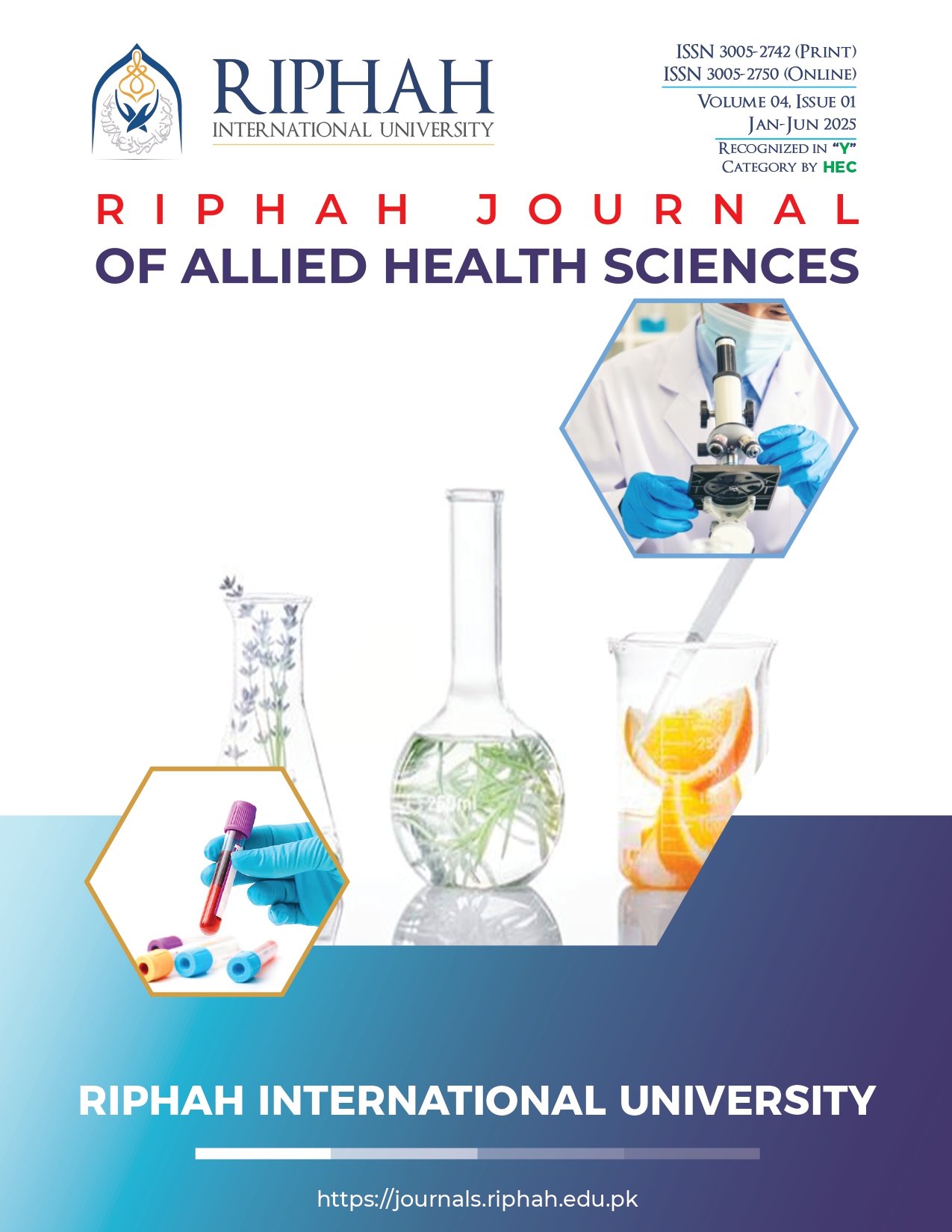Exploring the impact of combined Body Mass Index and Glycated Haemoglobin (HbA1c) levels on pre-diabetes risk
Keywords:
Body Mass Index, Glycated Haemoglobin, random blood glucose level, pre-diabetes, Type 2 Diabetes MellitusAbstract
Background: Prediabetes, a global health concern with its trending prevalence intensified the need of early and effective interventions. It’s a medical condition, recognized by elevated blood glucose but not sufficiently high to be defined as Type 2 Diabetes Mellitus. Key factors for prediabetes diagnosis included, HbA1c (a biomarker) which shows a comprehensive picture of glycaemic range from past 2 to 3 months with values from 5.7% to 6.4% indicating prediabetes. Body Mass Index (BMI), depicting adiposity in body leading to insulin sensitivity and impaired glucose metabolism, classifying participants into healthy, overweight and obese categories.
Objective: The primary objective was to explore the effect of BMI and HbA1c levels in participants to assess pre-diabetes risk.
Methodology: A quantitative, cross-sectional study was conducted between February 2023 and August 2024. The study population comprised university students aged 20–25 years, selected through stratified random sampling based on inclusion/exclusion criteria (excluding those with existing medical conditions). A total of 110 participants were enrolled following informed consent. BMI was calculated using standard anthropometric methods. HbA1c was measured via blood sampling using standardized laboratory protocols, while RBG levels were assessed using a handheld glucometer. Data were statistically analyzed using SPSS software.
Results: Among the 110 participants, 46 were male and 64 were female. BMI classification revealed 38.2% were within a healthy range (n=42), 41.8% overweight (n=46), and 20% obese (n=22). Based on HbA1c, 58.2% (n=64) had normal levels, while 41.8% (n=46) were in the prediabetic range. RBG results showed 59.1% (n=65) with normal glucose levels and 40.9% (n=45) falling within the prediabetic range. Pearson’s correlation analysis revealed a significant positive correlation between BMI and HbA1c (r = 0.46, p < 0.001), indicating elevated BMI is independently associated with prediabetes risk. In contrast, the correlation between HbA1c and RBG was non-significant (r = 0.182, p > 0.05), suggesting that elevated RBG may not directly influence HbA1c levels.
Conclusion: This study highlights the relevance of timely evaluation of Body Mass Index and Glycated Haemoglobin level to evaluate pre-diabetes for prompt interventions


